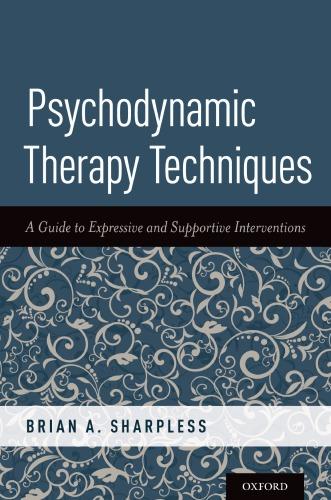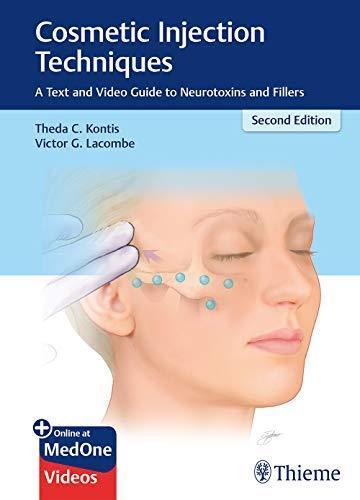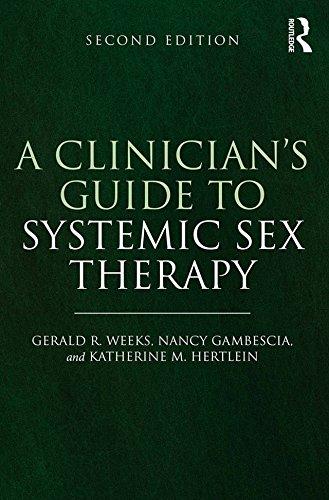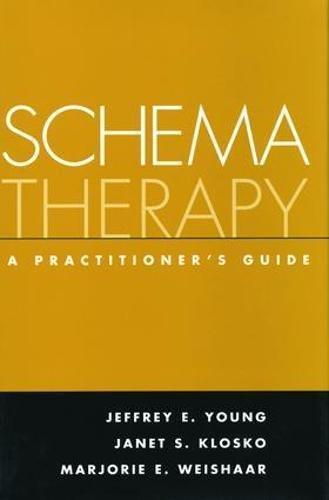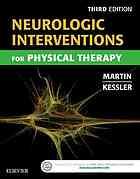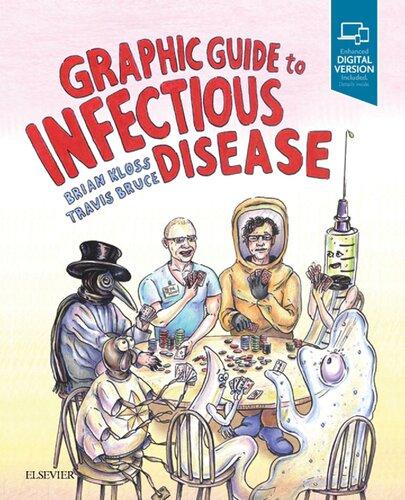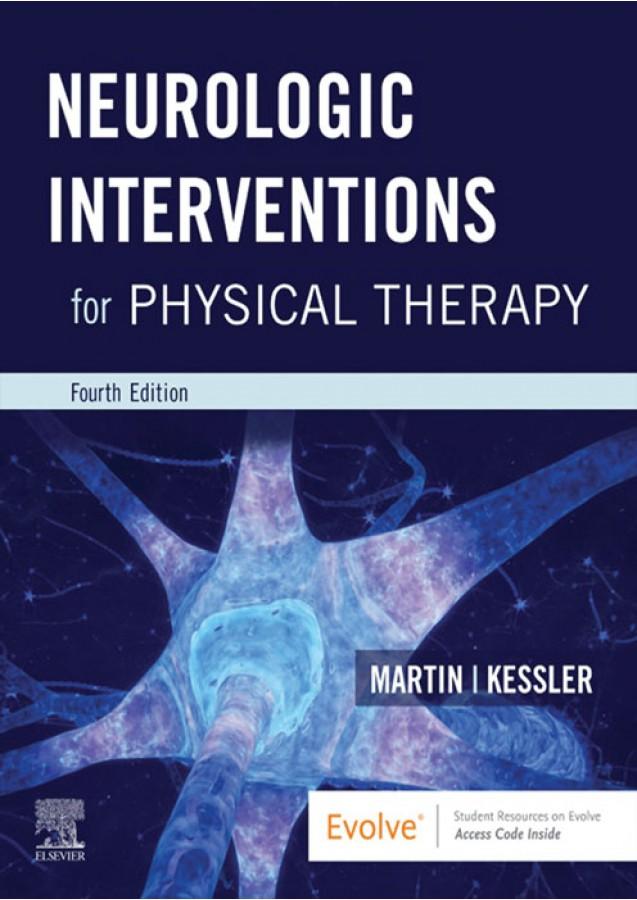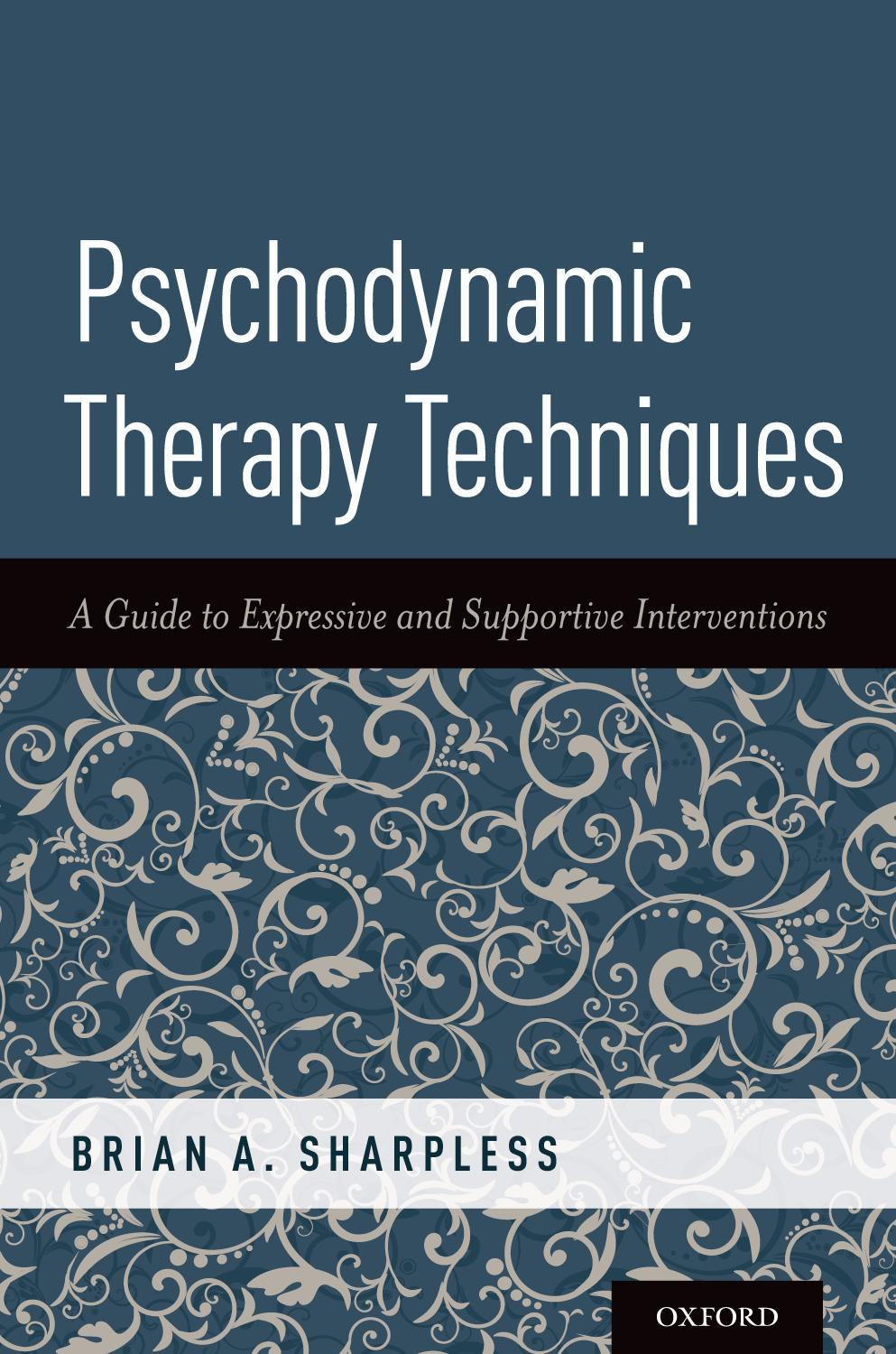Psychodynamic Therapy Techniques
A Guide to Expressive and Supportive Interventions
BRIAN A. SHARPLESS
Oxford University Press is a department of the University of Oxford. It furthers the University’s objective of excellence in research, scholarship, and education by publishing worldwide. Oxford is a registered trade mark of Oxford University Press in the UK and certain other countries.
Published in the United States of America by Oxford University Press 198 Madison Avenue, New York, NY 10016, United States of America.
© Brian A. Sharpless 2019
All rights reserved. No part of this publication may be reproduced, stored in a retrieval system, or transmitted, in any form or by any means, without the prior permission in writing of Oxford University Press, or as expressly permitted by law, by license, or under terms agreed with the appropriate reproduction rights organization. Inquiries concerning reproduction outside the scope of the above should be sent to the Rights Department, Oxford University Press, at the address above.
You must not circulate this work in any other form and you must impose this same condition on any acquirer.
Library of Congress Cataloging-in-Publication Data
Names: Sharpless, Brian A., author.
Title: Psychodynamic therapy techniques : a guide to expressive and supportive interventions / Brian A. Sharpless.
Description: New York, NY : Oxford University Press, [2019] | Includes bibliographical references and index.
Identifiers: LCCN 2018039422 (print) | LCCN 2018050440 (ebook) | ISBN 9780190676285 (UPDF) | ISBN 9780190676292 (EPUB) | ISBN 9780190676278 (paperback : alk. paper)
Subjects: LCSH: Psychodynamic psychotherapy—Technique.
Classification: LCC RC489. P72 (ebook) | LCC RC489. P72 S53 2019 (print) | DDC 616.89/14—dc23
LC record available at https://lccn.loc.gov/2018039422
9 8 7 6 5 4 3 2 1
Printed by WebCom, Inc., Canada
This book is dedicated to the continued inspiration—literary or otherwise— of Friedrich Nietzsche, Jimi Hendrix, Arthur Schopenhauer, Indiana Jones, Søren Kierkegaard, Christopher Hitchens, Mark Manning, John Waters, and the Ramones.
CONTENTS
Preface ix
Acknowledgments xi
1. Introduction 1
SECTION I Background Information for Psychodynamic Therapy Techniques
2. Do We REALLY Need Psychodynamic Therapy? 7
3. Goals of Psychodynamic Therapy 18
4. The Psychodynamic “Stance” 34
5. The Supportive–Expressive Continuum 52
6. Characteristics of “Good” Psychodynamic Interventions 62
7. How to Assess the Impacts of Interventions 72
SECTION II The “Classic” Psychodynamic Therapy Techniques in Contemporary Practice
8. Foundational Techniques Part I 85
9. Foundational Techniques Part II 102
10. The Process of Questioning 114
11. The Process of Clarification 122
12. The Process of Confrontation 135
13. The Process of Interpretation 152
SECTION III The Expanded Range of Psychodynamic Therapy Techniques
14. Supportive Therapy Techniques Part I 179
15. Supportive Therapy Techniques Part II 192
16. Repairing Ruptures in the Therapeutic Alliance 208
Afterword 219
Appendix A: Psychodynamic Therapy Manuals and Models 221
References 229
Index 257
I begin this book with a personal confession: I love psychodynamic psychotherapy. However, mine is not a young, wide-eyed love where I only see the good. Instead, it is a mature and nuanced love where, as Freud might say, I have owned my ambivalence. To be perfectly blunt, there are aspects of psychodynamic therapy that I hate with the white hot heat of a thousand suns.1 For instance, I hate the unnecessary obscurantism found in some of our books and constructs. I dislike the fact that some psychodynamic therapists remain uninterested in testing our most cherished beliefs.2 I also hate the nasty, reductionistic side of certain theories that view people through myopic eyes. But despite these criticisms, there is also so much to love. My hope is that the remainder of this book will more fully explain this pronouncement.
I have gravitated toward psychodynamic therapy’s realistic view of people since my undergraduate days. It is neither optimistic nor pessimistic. Though it may not be fun to think about, I fear that Freud, Nietzsche, Schopenhauer, and other depth psychologists were correct in realizing that there were practical limits for how well we can really know ourselves and others. Whatever progress we make in these regards is hard won. As one example, people often desire and dread the exact same thing and sometimes at the exact same moment.3 These confusing experiences do not make self-understanding easy. We are also fantastically good at deceiving ourselves.
Psychodynamic theory assumes this to be the case, and, in fact, some of its main techniques are predicated upon it. For example, interpretations the most “psychodynamic” of psychodynamic techniques—presuppose that patients are unaware of at least one aspect of their subjective experience (see Chapter 13). The therapist helps remedy this state of affairs by presenting them with an interpretive hypothesis. Further, one subtype of confrontation encourages patients to resolve their personal inconsistencies (see Chapter 12). Through these and other efforts, psychodynamic therapy helps people become more transparent to themselves. Regardless of how sick or healthy we are, all of us could use a bit of help in this area.
However, as anyone who studies the subject knows, it is difficult to write anything general about psychodynamic therapy (e.g., a book on techniques) without alienating large portions of the field.4 This text, though intended to be as neutral as possible, will nevertheless reflect my own preferred theories and prior training.5 However, my hope is that the descriptions of techniques, and the procedures for formulating them, will be applicable across the many forms of psychodynamic therapy. At present, all these viewpoints are needed, as they each provide a slightly different conceptual lens through which to view people and pathology. Psychotherapy is no small task. Given the sheer range and intricacy of human suffering, a plurality of views seems far preferable to a hegemony.
After all, humans are nothing if not complex and full of contradictions. This is strikingly apparent to me at the present moment. I drafted this preface while walking around the crumbling ruins of a castle owned by a long dead 16thcentury countess. By all accounts she was a brilliant woman, a polymath, a patriot, and a very good mother. However, she was also a sexual sadist and a serial killer— perhaps the most prolific in all recorded human history. If the trial records are to be believed, she may have been responsible for the deaths of up to 650 women and girls.6 Again, people are nothing if not complex and full of contradictions.
Regardless of the person or the patient involved, psychodynamic therapy is a useful, albeit imperfect method for peeling back the light, dark, and gray layers of human existence. A possibility for better relationships and an end to old patterns could result from using its techniques. More generally, psychodynamic therapy is a means to help people move forward in their lives or, at least, to better understand themselves and their many confusing contradictions.
Čachtice, Slovakia, 2018
NOTES
1. The reader will hopefully forgive me for adapting this particularly dramatic quote from the Bhagavad Gita (2009, p. 464).
2. However, as described in Chapter 2, there are a number of top-notch psychodynamic researchers currently hard at work.
3. For instance, see Sharpless (2013).
4. Jacques Barber and I (2015) recently argued that these internecine struggles might be a legitimate danger to the future of psychodynamic therapy.
5. This includes the broad suborientations of ego psychology and object relations as well as the more specific approaches of supportive–expressive therapy, transferencefocused psychotherapy, and mentalization-based treatments. I also have experience in cognitive-behavior and existential approaches.
6. See McNally (1983) and Craft (2014).
ACKNOWLEDGMENTS
A number of people contributed to making this book a reality. I would first like to express my gratitude to Sarah Harrington at Oxford University Press. Sarah is not only great at her job, but a lot of fun to work with. Second, I would like to thank all of my patients and clinical supervisors. Next, I would like to thank my colleagues, friends, and students at the American School of Professional Psychology, the University of Pennsylvania, Pennsylvania State University, and Washington State University. And last, but certainly not least, I would like to individually thank Gary Sharpless, Linda Sharpless, Jamie Weaver, Peter Arnett, Jason Baker, Jacques Barber, Larry Blum, Thomas Borkovec, Louis Castonguay, Dianne Chambless, Amanda Cummings, Homer Curtis, Dan Denis, Mariana Dobre, Karl Doghramji, Christopher French, Reed Goldstein, William Gottdiener, Alice Gregory, Laena Huffaker, Michael Kowitt, Ken Levy, Peter Lilliengren, James Martin, Dakota Mauzay, Kevin McCarthy, Victoria Merritt, Jessie Meyer, Barbara Milrod, the Nationals Capital Area Skeptics, Niels Nielsen, Debra O’Connell, Desmond Oathes, Aaron Pincus, the Psychodynamic Research listerve, the Ratio Organization of Popular Science, Michael Roche, Gowen Roper, Matt Rothrock, Ayelet Ruscio, Jeremy Safran, Debbie Seagull, Skeptics in the Pub UK, Christina Temes, Sandra Testa, Joseph Tse, Bo Vinnars, Deborah Wachter, Ernest Wachter, Kenneth Wachter, Thomas Wachter, and Jacob Zimmerman.
Psychodynamic Therapy Techniques
Psychotherapy is a strange business. It is also very hard to do well. Both these statements make sense if you consider what psychotherapy really entails. At its core, psychotherapy is intended to alleviate human suffering through only a combination of words and a relationship. Other fields may use drugs, surgeries, deep brain stimulation, etc., but this is not the case in psychotherapy. For better or worse, it has always been a “talking cure” (Breuer & Freud, 1955, p. 30) and remains so to this day. The various modalities—psychodynamic therapy included— just tend to speak a bit differently and create different types of relationships.
Given these limited tools, good therapists need to know not only what to intervene on (i.e., a problem derived from a good case formulation) but also how to intervene (i.e., which techniques to use and when to use them).1 Both are viewed as necessary pieces of the psychotherapy puzzle (Anderson & Hill, 2017; Caspar, 2017). For instance, technical skill will be unlikely to help patients unless guided by a good case formulation. This is because techniques are believed to be most beneficial when applied in a deliberate manner using a long-term time horizon (i.e., not haphazardly or reactively). Similarly, even the best of case formulations will be of limited value unless therapists know how to use them when they are in the room with patients. Building upon a famous quote from Immanuel Kant (1996, p. 107), formulations without techniques are empty; techniques without formulations are blind
But how can therapists best learn these skills? A number of readable and “experience-near” introductory psychodynamic texts are fortunately available (e.g., Cabaniss, Cherry, Douglas, & Schwartz, 2011; Gabbard, 2014; McWilliams, 2011; Summers & Barber, 2010). When used in conjunction with appropriate supervision, they provide useful introductions to psychodynamic practice (e.g., case
formulation, use of countertransference) and help beginning therapists feel more comfortable with patients. Given the breadth of their coverage, though, it is understandable that they are unable to devote extensive attention to every topic. Therefore, the present work has the narrower aims of (a) describing many of the techniques of psychodynamic psychotherapy and (b) explaining how to prepare them for clinical use.
ON THE DEFINITIONS OF SPECIFIC PSYCHODYNAMIC TECHNIQUES
However, these two simple goals quickly became complicated. The long history of our field is in many ways a strength,2 but it also has some unintended consequences. For example, a number of techniques have been defined inconsistently across authors. One person’s confrontation might be another author’s clarification, or vice versa (see Chapters 11 and 12). Making the matter even more complex, certain technical terms have undergone such heavy theoretical modification over the years that they are viewed quite differently in 2019 than they would have been in the early days of psychoanalysis (e.g., evenly-hovering attention as described in Chapter 8). A solution to these conceptual difficulties—imperfect though it may be—was to separate the main techniques according to their therapeutic intentions. 3 Therefore, all the specific psychodynamic interventions were distinguished from one another according to their specific a priori clinical functions. This will hopefully make the book easier to use.
BACKGROUND TRAINING
This book was primarily written to be an intermediate-beginner level text for graduate students and psychiatric residents. It may also be useful for practitioners of other orientations, those interested in psychotherapy integration (Stricker, 2010), and psychotherapy researchers. Regardless, proper use of these techniques presupposes:
• experience with psychodynamic case formulation;
• a basic knowledge of psychodynamic theories and concepts;
• diagnostic interviewing skills;
• comfort assuming a therapist role with patient; and
• knowledge of risk assessment (e.g., how to assess for suicidal or homicidal risk).
If any of these knowledge bases have not yet been acquired, this book might best be supplemented with one of the previously mentioned psychodynamic texts and other relevant resources. Of course, it is also strongly recommended that readers receive clinical supervision from licensed providers intimately familiar with these
techniques (i.e., trained psychodynamic psychotherapists or psychoanalysts). The process of psychodynamic therapy has a steep learning curve, and it will take time, patience, repetition, and careful self-observation to effectively use these interventions. Therefore, therapists may want to begin this process by working through any suggested technical procedures (e.g., the six steps in the process of interpretation listed in Chapter 13) until each technique begins to feel more effortless and “natural.”4
OVERVIEW OF THE BOOK STRUCTURE
This book is divided into three sections and one appendix. The first section focuses on information relevant to understanding and applying psychodynamic techniques. It begins with a chapter on the empirical status of psychodynamic therapy and makes the case for its importance in the contemporary clinical landscape. Next, individual chapters describe psychodynamic treatment goals, components of the psychodynamic stance, and the “supportive–expressive” continuum of techniques/treatments. The last two chapters detail the characteristics of good psychodynamic interventions and suggest ways to assess clinical impacts during session (i.e., were they effective?).
The second section of this book focuses on what many practitioners consider to be the classic psychodynamic techniques (e.g., Yeomans, Clarkin, & Kernberg, 2015).5 Eleven foundational techniques are described first (e.g., how to listen in a psychodynamic manner, abstinence, technical neutrality). They are considered foundational because they lay the groundwork for more specific interventions. Next, individual chapters are devoted to each of the “big four” techniques of questions, clarifications, confrontations, and interpretations. Clinical vignettes6 are interspersed among the historical, theoretical, and practical discussions. Methods for formulating these techniques are suggested along with tips on phrasing.
Section III focuses on the expanded range of psychodynamic practice by outlining supportive therapy techniques. As is well known, not every patient is appropriate for traditional, insight-oriented therapy. In fact, this approach may even be contraindicated for sicker patients (especially for those with a psychotic personality organization or those in a state of acute crisis; see Rockland, 1989). Six sets of supportive techniques are described. The intentions of these range from supporting self-esteem and reducing patient anxiety to improving adaptive life skills. The final chapter focuses specifically on ways to identify and repair therapeutic alliance ruptures. These events, common to all forms of therapy (i.e., expressive, supportive, or otherwise), can lead to poor therapy outcome and premature termination (Eubanks-Carter, Muran, & Safran, 2015). However, if managed properly, ruptures can also serve as an impetus for meaningful clinical change (Safran & Muran, 2000).
Finally, the appendix, co-authored with Peter Lilliengren, serves as a resource for those interested in exploring the empirical literatures or locating specific
clinical tools. It lists psychodynamic models (e.g., supportive-expressive therapy) as well as disorder-specific manuals (e.g., panic-focused psychodynamic psychotherapy) and compiles their corresponding references. As discussed more fully in the next chapter, psychodynamic researchers have made significant contributions to psychotherapy research. Manualized treatments were—and continue to be— a useful means to this end. Further, many of these manuals can also serve as helpful guides for therapists interested in learning how to apply psychodynamic techniques to specific patient populations.
NOTES
1. This also presupposes some skill in managing therapeutic relationships.
2. For example, this long history resulted in the many subfields we have today (e.g., object relations, self psychology) and the different clinical viewpoints that they each provide.
3. Therefore, for the sake of consistency, certain authors are prioritized over others.
4. There is obviously not only one “correct” way to enact psychodynamic techniques. The suggested procedures are included for didactic purposes. Responsiveness to a particular patient is key.
5. The majority of these have been in use since the earliest days of psychoanalysis.
6. To preserve patient and supervisee confidentiality, clinical vignettes are a combination of de-identified (i.e., their identities and details have been heavily distorted), aggregated (i.e., blends of actual people), and hypothetical patients/supervisees.
Do We REALLY N eed Psychodynamic Therapy? 1
INTRODUCTION
I do not assume that everyone reading this book is a fan of psychodynamic psychotherapy. When I began teaching and supervising in 2006, I soon noticed that a not insignificant proportion of students came to graduate training with negative preconceptions. Given some of the depictions found in movies, television, and undergraduate textbooks (Habarth, Hansell, & Grove, 2011; Redmond & Shulman, 2008), I do not blame them for their skepticism. If these were my only exposures to psychodynamic therapy, I might feel similarly.
Along with misinformation, though, the field itself is partially to blame for bad public perceptions. As noted by Shedler (2010), “one potential source of bias is a lingering distaste in the mental health professions for past psychoanalytic arrogance and authority. . . and . . . a dismissive stance toward research” (p. 98). It is an unfortunate historical fact that psychodynamic therapists indeed arrived late to the game of traditional empiricism. Other orientations (i.e., humanistic, behavioral, and cognitive modalities) developed “rules” for the never-before-existing field of psychotherapy research, and, perhaps not surprisingly, these rules were not focused on traditional psychodynamic constructs (Barber & Sharpless, 2015). Early psychoanalytic scholarship focused not on clinical trials and the study of groups of people, but on the intensive study of individuals (Boswell et al., 2010).2 This emphasis on case studies, though valuable in a number of ways, was not viewed by some scientists as “rigorous enough” or scientifically convincing. However, as will be demonstrated in the following discussion, the situation has changed considerably in recent years, and
a number of different research methodologies are currently in operation. I echo the sentiments of Thomä and Kächele (1992) who noted, “The more strictly rules are laid down and the less their impact on therapy is investigated empirically, the greater the danger of creating orthodoxy” (p. 7; emphasis added).
Therefore, throughout the remainder of this chapter, I will detail the reasoning behind an affirmative answer to the question posed in the chapter title. To be clear, my intention is not to criticize other approaches and, in a sense, argue for psychodynamic therapy’s superiority. That would be unreasonable, inconsistent with my own training3, and intellectually myopic. I instead hope to make the far more reasonable claim that a multiplicity of orientations is needed and that psychodynamic therapy has an important role to play in contemporary science and practice.
REASONS THAT WE STILL NEED PSYCHODYNAMIC THERAPY
It Is a Flexible Treatment Approach
As will be demonstrated in Sections II and III, psychodynamic therapy is an extremely flexible and responsive treatment approach. It also offers a unique perspective on the alleviation of human suffering (Blagys & Hilsenroth, 2000; also see Chapter 4). Though Freud began his work with a fairly narrow procedure and very specific patients, the “scope” of psychodynamic therapy has massively expanded over the past 120 years. No longer even an exclusively “Western” approach, over 130 psychoanalytic training centers can be found dispersed across six continents (i.e., including Asia and Africa; International Psychoanalytic Association, 2018). Dynamic therapy can now be applied to individuals, couples, and groups at many different ages and in many different treatment settings (Gabbard, 2014; Midgley, O’Keefe, French, & Kennedy, 2017; Summers & Barber, 2010).
However, the majority of empirical attention has been devoted to individual dynamic therapy with adult patients. It has been used to treat a number of psychiatric diagnoses (Gabbard, 2014) at any of the three levels of personality organization (i.e., neurotic, borderline, and psychotic; Kernberg, 1984). Just to give a small sampling of this range (see the appendix; Rockland, 1989), psychodynamic therapy has been successfully applied to “neurotic” conditions (e.g., social anxiety disorder; Leichsenring et al., 2014), personality disorders (e.g., borderline personality disorder; Clarkin, Levy, Lenzenweger, & Kernberg, 2007), somatic complaints (e.g., medically unexplained pain; Chavooshi, Saberi, Tavallaie, & Sahraei, 2017), and eating disorders (e.g., anorexia nervosa; Dare, Eisler, Russell, Treasure, & Dodge, 2001).
The time-frame of contemporary psychodynamic therapy is also more flexible than it was in 1900. Whereas the duration of classical psychoanalysis was often measured in years and required three to six visits per week,4 many current treatments last from weeks to months. In fact, the majority of outcome trials have focused on time-limited approaches (i.e., 8–24 sessions). These shorter therapies
required a heavy modification of standard psychodynamic processes (e.g., free association as discussed Chapter 7), shifts in therapist activity, and responsiveness to the needs of specific patients. They also presupposed an ability to “focus” the treatment, and researchers have developed several ways to do this.
For example, therapists with very little training5 can reliably derive a core conflictual relationship theme (CCRT; see Chapter 3) from patient material (e.g., Book, 1998). A CCRT essentially distills a patient’s problematic relational patterns down to its essence. This information is then shared with the patient in “experience-near” language. The CCRT method, which forms the basis of supportive-expressive psychotherapy (Luborsky, 1984), has been used in numerous empirical studies (see the appendix) and is both clinically useful and empirically defensible (Crits-Christoph, Gibbons, & Mukherjee, 2013; Leichsenring, Steinert, & Crits-Christoph, 2018). Methods such as these allow complex and individualized psychodynamic work to take place under stringent time constraints.
All Existing Treatments Have “Nonresponders” and “Nonremitters”
By way of broad summary, psychotherapy is clearly an effective treatment for any number of psychiatric conditions (Roth & Fonagy, 2005). To say otherwise would require a massively distorted reading of the outcome literatures. However, this does not imply that there is no room for improvement. Even in the best and most well-controlled clinical trials, remission rates are not terribly high (Roth & Fonagy, 2005) and, even more troubling, approximately 5% to 10% of patients actually get worse during treatment (i.e., they deteriorate; see Lambert, 2013).6 This is the case with all major treatment modalities, and psychotherapy is not unique in having these challenges.
The efficacy of psychopharmacology has also been questioned. As one example, consider the use of antidepressant medications for major depressive disorder. Though widely used and considered efficacious, a recent review in World Psychiatry concluded that the efficacy of antidepressants was “less than impressive” (Khan & Brown, 2015, p. 294). This is not to say that they are useless, obviously, but their efficacy is more limited than previously thought. Other research indicates that antidepressants may be more helpful for patients with severe depression than those with mild or moderate cases (Fournier et al., 2010). Further, medication treatment gains may not be as long-lasting as those caused by psychotherapy (Hollon et al., 2005; Spielmans, Berman, & Usitalo, 2011). Interestingly, and despite these limitations, medications are on the rise whereas the use of psychotherapy is in decline (Clay, 2011).
Regardless of treatment modality or the specific disorder being treated, the reasons for nonresponse, nonremission, and deterioration are not yet fully understood. As patients are quite heterogeneous—even those ostensibly suffering from the same disorder—it only makes sense that not every treatment will be effective
for every patient or every problem. Therefore, previously summarized findings imply a clear need for multiple treatment options.
Psychodynamic Therapy Is Efficacious
Individuals less familiar with the therapy outcome literatures are often surprised by the evidence base for psychodynamic approaches.7 Though getting a “late start” compared to cognitive behavioral therapy (CBT), the past two decades in particular witnessed an increase in high-quality psychodynamic research. This resulted in an ability to conduct meta-analytic studies8 that compared and contrasted the overall efficacy of psychodynamic therapy with other modalities.
In general, psychodynamic therapies are no more or less effective than others.9 A well-conducted and very wide-ranging meta-analysis found that psychodynamic therapy was clearly better than no treatment (i.e., controls or “treatment as usual”) and not significantly different from alternatives (e.g., CBT) at posttreatment or follow-up assessments (Barber, Muran, McCarthy, & Keefe, 2013). These findings held for mood disorder, anxiety disorder, and personality disorder studies (see also Driessen et al., 2015; Leichsenring & Leibing, 2003; Leichsenring, Rabung, & Leibing, 2004). However, this is not to say that no differences exist. For instance, the limited comparisons indicated that dynamic therapy may be less effective for generalized anxiety disorder than CBT (Barber et al., 2013).10
The results of one recent meta-analysis are particularly compelling. Steinert, Munder, Rabung, Hoyer, and Leichsenring (2017) took the unique approach of using adversarial collaboration to control for potential allegiance effects. Allegiance effects are one of many forms of bias that can inadvertently creep into meta-analyses (Cuijpers, 2016). In this case, the research team included representatives of psychodynamic and CBT approaches during all phases of the study (e.g., study selection, analysis). Their overall findings, like those previously mentioned, suggested equivalence of psychodynamic therapy to the more well-established CBT.11
Finally, there is limited evidence that more intensive treatments may be better than those that are less rigorous. For instance, Leichsenring and Rabung (2008) found that longer-term psychodynamic treatments (i.e., at least 50 sessions) were superior to approaches of shorter duration.12 Further, in a study comparing longterm psychodynamic therapies, Blomberg, Lazar, and Sandell (2001) found that higher weekly session frequencies (M = 3.5) were better than lower (M = 1.4 sessions per week).
Psychodynamic Therapy May Have Other Important Clinical Benefits
Although outcomes may be equivalent when averaged across studies, there is an increasing body of evidence that psychodynamic therapy is associated with other positive clinical gains. Some of these may be unique13 and could be particularly
helpful for patients who have corresponding deficits. However, given the limited state of the research, additional replications are needed to increase confidence that these effects are not found in other modalities.
For instance, psychodynamic therapy leads to increases in mentalization/reflective functioning (Bo et al., 2017; Maxwell et al., 2017; Meulemeester, Vansteelandt, Luyten, & Lowyck, 2018; Rudden, Milrod, Target, Ackerman, & Graf, 2006). Mentalization is the crucial human capacity to understand oneself and other people in terms of internal mental states such as feelings and desires (Fonagy, Target, Steele, & Steele, 1998). It is considered to be an important form of social cognition with a wide range of clinical applicability (e.g., individuals, groups, caregivers, and therapists; Bateman & Fonagy, 2016). Certain types of patients— especially those with borderline personality disorders—have deficits in this area (Bateman & Fonagy, 2006). To the best of my knowledge, only dynamic treatments have been found to increase mentalization (Levy et al., 2006), but it would not be surprising if other approaches also improved this capacity (e.g., CBT).
Psychodynamic therapy also fosters changes in patient insight/selfunderstanding 14 This has been a therapeutic target and proposed mechanism of change since the earliest days of psychoanalysis (see Chapter 3) and, indeed, levels of self-understanding increase with successful treatment (Connolly et al., 1999; Kivlighan, Multon, & Patton, 2000). However, with one exception (Hoffart, Versland, & Sexton, 2002), this was not found in other orientations. Interestingly, the Hoffart et al. study used schema therapy. This integrative variation of CBT shares some degree of overlap with psychodynamic therapy (Riso, du Toit, Stein, & Young, 2007).
Patients also seem to improve their quality of object relations.15 The unfortunate (and ponderous) phrase “object relations” refers to the way that we internalize and symbolize our relationships with others (Blatt, 1974). Individuals with good object relations tend to have stable connections with others that are reliable, satisfying, nuanced, and reciprocal. Those with poorer object relations have unstable relationships characterized by such things as superficiality, neediness, preoccupation with potential loss, and so on (Azim, Piper, Segal, Nixon, & Duncan, 1991). Several trials indicated that psychodynamic treatment improves patients’ overall quality of object relations (Lindgren, Werbart, & Philips, 2010; Mullin, Hilsenroth, Gold, & Farber, 2017, 2018; Vermote et al., 2010), but this has yet to be assessed in nondynamic modalities (Barber et al., 2013). Therefore, more data are needed to determine whether this is indeed a psychodynamic-specific impact. Other psychodynamic constructs have been found to change with treatment and in the expected directions. However, limited data indicate that they are not “unique” but manifest in other modalities as well. For instance, it is difficult to identify a more “classic” psychodynamic construct than patient defense mechanisms (Freud, 1966; Reich, 1990)16. Defenses have played a key role in treatment since the very founding of psychoanalysis, and their importance continues to the present day (McWilliams, 2011).
As expected, defensive functioning improves over the course of psychodynamic treatment. Successful therapy results in the decreased use of immature defenses
(Akkerman, Carr, & Lewin, 1992; Roy, Perry, Luborsky, & Banon, 2009) and an increased use of mature defenses (Johansen, Krebs, Svartberg, Stiles, & Holen, 2011; Kramer, Despland, Michel, Drapeau, & de Roten, 2010) but appears to have little impact on the neurotic defenses (Akkerman, Lewin, & Carr, 1999). Therefore, defenses at the “extremes” may be more malleable. Interestingly, CBT improves defensive functioning as well (Heldt et al., 2007; Johansen et al., 2011). Given the conceptual overlap between cognitive distortions (Beck, 2011) and certain defense mechanisms, this makes a good bit of theoretical sense. Future research may help determine whether individual defenses might be modified more easily through one approach or the other.
Another nonunique construct is relationship rigidity. As is well-known, psychodynamic theories assume the reliable repetition of interpersonal patterns (e.g., as in transference). This is especially the case for those that were established during formative developmental periods. Everyone manifests relational patterns, therapists included, but some are more inflexible and problematic than others. Since psychodynamic therapy focuses on confronting and understanding these repetitions of behavior (see Section II), it is perhaps not surprising that reductions in relationship rigidity occur (Salzer et al., 2010; Slomin, Shefler, Gvirsman, & Tishby, 2011). However, this has been somewhat inconsistent across studies (Wilczek, Weinryb, Barber, Gustavsson, & Asberg, 2004), and differences in the measurement of rigidity may explain these discrepancies (McCarthy, Connolly Gibbons, & Barber, 2008). These reductions in rigidity may not be unique to psychodynamic therapy (e.g., Ruiz et al., 2004), but more research is needed.
Finally, mention should be made of changes to attachment patterns. Attachment theory has grown far beyond its original confines as a psychoanalytic concept (for certain anticipations of attachment theory, see Fairbairn, 1994, 1994; Klein, 1949) and has entered the field of psychology more generally through the pioneering work of John Bowlby and Mary Ainsworth (Cassidy & Shaver, 2016). Psychodynamic therapy, with its emphasis on interpersonal needs and patterns, has been shown to move patients closer to secure attachment (Levy et al., 2006). However, improvements in attachment have also been found with CBT (Zalaznik, Weiss, & Huppert, 2017). I would not be surprised if this occurred in other modalities as well (e.g., humanistic therapy).
In ending this section, it may be important to note that all the changes previously detailed are consistent with what psychodynamic theory would predict. Even if some of these constructs and potential mechanisms of change are not unique, it is nonetheless important to document both the supportive and disconfirming data and encourage further empirical inquiry.
Psychodynamic Therapy Leads to Significant Reductions in Healthcare Costs
In addition to symptom reduction and other positive clinical impacts, psychotherapy reduces healthcare costs (American Psychological Association, 2012).
This finding may be particularly attractive to policymakers and insurance companies but carries a practical significance for society as well. Few could argue that mental health issues are not a severe burden on limited healthcare resources. The situation may be even more dire than it appears, though, as a recent study in The Lancet argued that previous calculations actually underestimated the true cost of the problem (Vigo, Thornicroft, & Atun, 2016).
Fortunately, data on the specific cost-effectiveness of psychodynamic therapy exist. As one example, Abbass and Katzman (2013) conducted a review of 13 trials of intensive short-term dynamic psychotherapy17 that also assessed healthcare utilization. Though the studies were heterogeneous in terms of patients (e.g., treatment-resistant depression, personality disorders) and treatment durations (i.e., 1–28 sessions), the results were nonetheless compelling. In the seven studies that assessed medication use, patients on pretherapy medication reduced their overall number of prescriptions, and almost 60% stopped using them altogether. The authors also assessed cost-effectiveness in terms of the percentage of patients returning to work. These rates ranged from 14.3% (i.e., the one-session treatment) to 100% in a sample of patients treated for chronic headaches.
Two other individual studies deserve mention. First, Lilliengren et al. (2017) recently published a trial of intensive short-term dynamic psychotherapy for generalized anxiety disorder. They identified significant reductions in posttherapy physician costs following treatment. These reductions continued in a linear fashion for four consecutive years. By year two of the follow-up, the mean patient physician costs fell below the national average (Lilliengren et al., 2017, pp. 5–6). Second, a comparative outcome trial of anorexia nervosa patients found that focal psychodynamic therapy was more cost-effective than enhanced treatment as usual and enhanced CBT (Egger et al., 2016). The authors reported that this was primarily due to less patient use of hospitalization.
Constructs Derived from Psychodynamic Theory Are Useful and Have Been Adopted into Other Orientations
It will probably come as no surprise to learn that ideas derived from psychodynamic theory have been incorporated into other modalities. After all, from a purely historical perspective, how could this not happen? Psychoanalysis preceded cognitive, humanistic, gestalt, and existential approaches to therapy by many years, and the founders of these systems were all initially trained as analysts (i.e., Aaron Beck, Albert Ellis, Carl Rogers, Fritz Perls, Ludwig Binswanger). Even if they disagreed with certain fundamental psychodynamic principles, they were intimately familiar with them.
Three constructs in particular have been so widely adopted that they are no longer even seen by most people as psychodynamic constructs, but instead as general psychological constructs. First, consider the therapeutic alliance. Emerging from the early work of Ralph Greenson (Greenson, 1967) and other analysts, this extremely intuitive construct is now viewed as a sine qua non of contemporary
psychotherapy. It would be difficult to imagine an outcome trial being funded today if the alliance was not measured (for a review, see Muran & Barber, 2010). Second, the idea of unconscious processing (also known as automatic processing) is another widely accepted psychological construct that reaches far beyond clinical psychology (Bargh, Schwader, Hailey, Dyer, & Boothby, 2012). To be clear, the Freudian unconscious and its vicissitudes (Freud, 1964) differ from the nondynamic variants in important ways, but overlap nonetheless exists (see also Beck, 2011; Huprich, 2009). Finally, research on attachment theory has exploded since Bowlby’s early work (Bowlby, 1969; Bowlby & King, 2004). Attachment has influenced many subdisciplines of psychology (e.g., developmental) as well as certain CBT approaches (Gilbert, 2014). More generally, though, it continues to yield empirical data with direct clinical applicability to psychotherapy in general (Cassidy & Shaver, 2016) and psychodynamic therapy in particular (Target, 2018).
Constructs Derived from Psychodynamic Theory Continue to Be Adopted into Other Approaches
Psychodynamic constructs continue to be used in other approaches.18 I will only provide two brief examples, but I imagine that there are more. First, Franz Alexander’s idea of a corrective emotional experience (CEE; Alexander & French, 1946) recently received an uptick in attention. His original definition of a CEE as the patient “reexperiencing the old, unsettled conflict but with a new ending” (p. 338; also see Chapter 7) could potentially happen in any relationship, including with a therapist. Interestingly, the new-found interest in CEEs can be found across orientations. As evidence for this, a series of conferences on this topic were held at Pennsylvania State University between 2007 and 2011. The meetings resulted in an edited book with chapters authored by representatives of each major theoretical orientation (Castonguay & Hill, 2012). Although there was disagreement on certain aspects of CEEs, no author questioned their importance. Given the strong negative reactions that Alexander’s idea initially garnered from his psychoanalytic peers (i.e., Sharpless & Barber, 2012), this interorientation agreement was all the more striking. Section II of that same book (pp. 159–352) included seven empirical studies, and more have been conducted since publication (Friedlander et al., 2012; Mallinckrodt, Choi, & Daly, 2015). It is possible that, as research accrues, the CEE may become another clinically useful, yet transtheoretical construct.
Second, reflective functioning/mentalization also appears to be leaving the psychoanalytic “nest.” Firmly rooted in attachment theory, mentalization has a long history in psychoanalytic thought (for a review, see Fonagy et al., 1998) and, as previously noted, has been assessed in numerous psychodynamic trials. Recently, Swedish researchers (Ekeblad, Falkenstrom, & Holmqvist, 2016) assessed pretherapy levels of reflective functioning/mentalization within the context of two nondynamic treatments for depression (i.e., CBT and interpersonal psychotherapy). They identified a moderating effect such that lower levels of reflective
functioning predicted a worse outcome and poorer working alliance in both treatments. These results have practical implications. Namely, it may be important to differentiate between patients with lower and higher levels of mentalization to better determine their appropriateness for either of these two treatments. From my perspective, interesting and high-quality research like this can only help therapists improve their ability to help patients and also foster mutual influence among “competing” orientations (see also Barber & Sharpless, 2015).
A CASE FOR THEORETICAL PLURALISM
I hope to have made a reasonably compelling case for psychodynamic therapy to retain an important position among the ever-growing panoply of psychological treatments. While I am generally optimistic for the future, it would be naïve to say that it looks entirely rosy. There are some important challenges that the field will be forced to face sooner rather than later. Jacques Barber and I summarized three of these in a special issue of Psychotherapy Research (Barber & Sharpless, 2015). The first two affect psychotherapy as a whole.
First, and as previously mentioned, there has been an increased medicalization of the mental health field. Despite the clear benefits of psychotherapy, the use of psychopharmacology is rising. According to the National Center for Health Statistics (2016), 10.7% of the US population (all ages) between 2011 and 2014 used at least one antidepressant in a 30-day period, and 5.3% used at least one anxiolytic, sedative, or hypnotic (p. 295). From 1988 to 1994, these rates were only 1.8% and 2.8%, respectively. Needless to say, that is quite an increase.
Second, there has been a drastic reduction in the availability of funding for psychotherapy research. Though some European countries may be faring better than North America in terms of governmental support, there appears to be a nearly universal decline. Although these restraints will force researchers to come up with creative (and cheaper) ways to test novel hypotheses, they also limit the number of high-quality (i.e., expensive) randomized controlled trials that can be conducted. This would obviously curtail the field’s ability to answer certain questions that are crucial to the public interest. So, in a nutshell, things could be better.
There is an even more uniquely troubling issue facing dynamic therapy, though. If existing trends continue there will be fewer and fewer opportunities for psychodynamic training. This is especially the case in academic psychology departments. As one example of this, the number of core faculty in North American clinical psychology programs who consider themselves to be psychodynamic has been steadily declining (Levy & Anderson, 2013). This trend does not appear to be present in counseling psychology programs (Sharpless, Tse, & Ajeto, 2014), but the reasons for this are unclear.
Postgraduate psychoanalytic training centers are also experiencing difficulties. As noted by Robert Pyles (first president of the Psychoanalytic Society of New England, East), “the evidence is clear. Our recruitment is dwindling. Our membership is declining. Our members are divided. And more than a third of our
